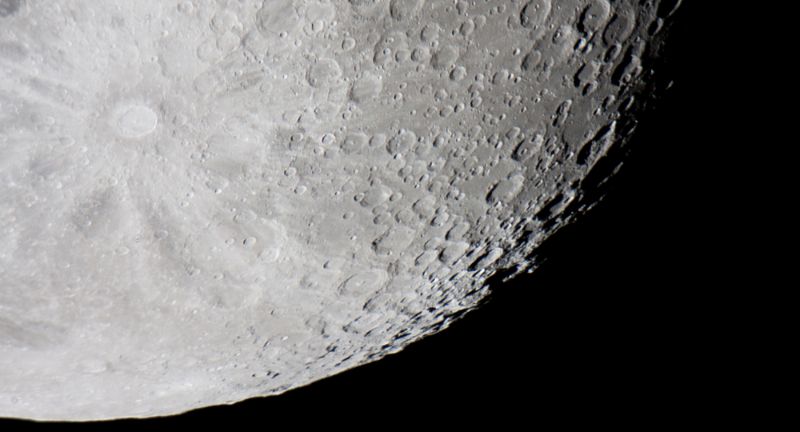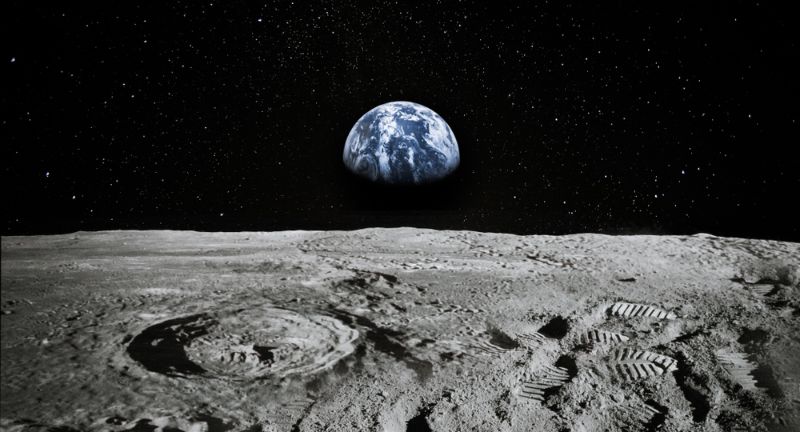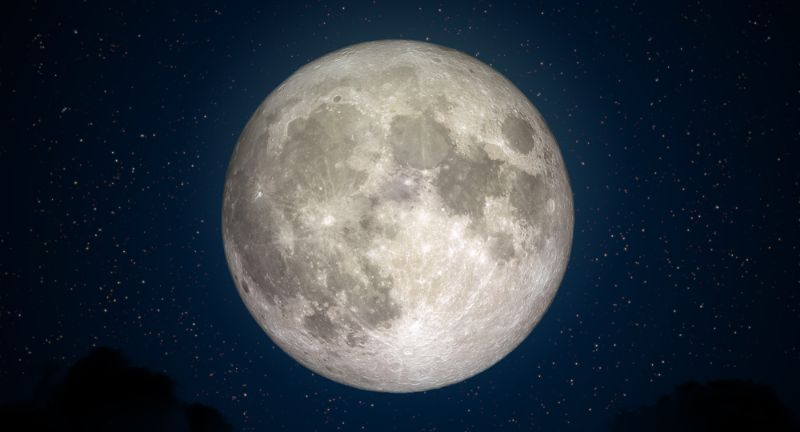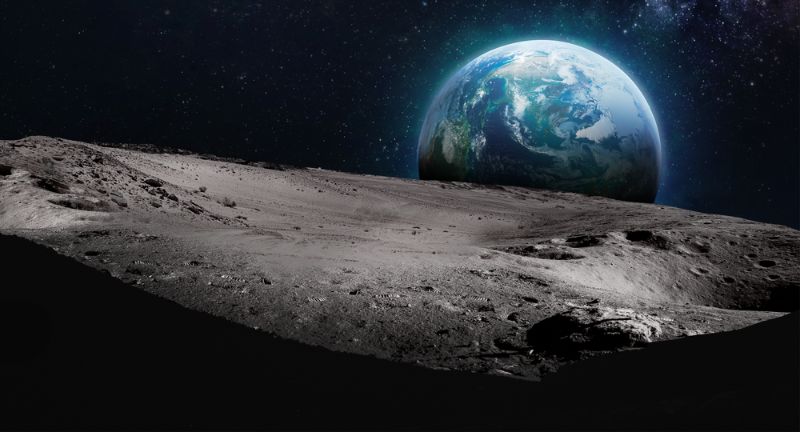
Shutterstock
The Moon, our closest celestial neighbor, has captivated human curiosity and imagination for centuries. Serving as Earth’s only permanent natural satellite, it plays a pivotal role in shaping our planet’s tides, influencing cultural narratives, and advancing our understanding of the cosmos. From its formation and geological features to its influence on Earth’s rotation and potential for future colonization, the Moon offers a unique window into the workings of our Solar System and the potential for human exploration beyond our planet. This collection of fascinating facts unveils the Moon’s mysteries, highlighting its significance in scientific research, cultural significance, and exploration potential, providing a comprehensive overview of this enigmatic satellite that lights up our night sky.
The Moon is Earth’s Only Permanent Natural Satellite

Shutterstock
The Moon plays a significant role as Earth’s only permanent natural satellite, captivating observers for millennia. It ranks as the fifth largest moon in the Solar System, showcasing its considerable size relative to other moons orbiting planets. Its presence influences various Earthly phenomena, including tidal movements, and has been a focal point for scientific study and exploration. The Moon’s unique relationship with Earth, marked by its consistent orbit and visibility, has made it a key subject in the study of planetary science and space exploration.
Distance from Earth

Shutterstock
The Moon is located approximately 384,400 kilometers (238,855 miles) away from Earth, a distance that allows it to be the only celestial body visited by humans beyond our planet. This relatively close proximity in cosmic terms facilitates its impact on Earth, such as the creation of tides. The distance between Earth and the Moon has been measured with increasing accuracy over the years, thanks to laser ranging experiments that reflect lasers off mirrors left on the lunar surface by Apollo astronauts. Understanding this distance is crucial for satellite communications, space exploration, and even in calculating the precise gravitational influences on Earth’s oceans.
Orbital Period

Shutterstock
The Moon completes its orbit around Earth in approximately 27.3 days, a period known as a sidereal month. This orbital characteristic is essential for understanding the Moon’s phases and the timing of eclipses, which have both fascinated and aided humanity in timekeeping for centuries. The precision of the Moon’s orbit also helps scientists study the dynamics of Earth-Moon interactions, including tidal forces and the Moon’s gradual recession from Earth. The orbital period reflects the intricate dance between Earth and the Moon, governed by their mutual gravitational pull.
Synchronous Rotation

Shutterstock
The Moon’s synchronous rotation means it rotates on its axis in roughly the same time it takes to orbit Earth, resulting in the same hemisphere always facing our planet. This phenomenon, known as tidal locking, is why we only see one side of the Moon from Earth, commonly referred to as the “near side.” The far side, or the “dark side” as it’s mistakenly called, was unseen by human eyes until the era of space exploration. Synchronous rotation is a fascinating aspect of the Moon’s physics, illustrating the gravitational interactions that have shaped the Earth-Moon system over billions of years.
The Dark Side of the Moon

Shutterstock
The far side of the Moon, often called the “dark side,” is a misnomer because it receives just as much sunlight as the side facing Earth. This region remained a mystery until the advent of lunar orbiters in the 1960s, which provided the first glimpses of the lunar far side. Unlike the near side, the far side features a rugged terrain heavily cratered and with few of the dark, basaltic plains known as maria. The exploration of the far side has challenged scientists to understand the differences in lunar geography and geology between the two hemispheres.
Size

Shutterstock
With a diameter of about 3,475 kilometers (2,159 miles), the Moon is roughly one-fourth the diameter of Earth, making it a significant presence in our night sky. Its size relative to Earth is unusually large when compared to other moons in the Solar System, which has led to numerous theories about its formation. This substantial size affects Earth in many ways, including its gravitational pull that leads to tides. The Moon’s considerable volume and mass have made it an object of fascination and study, offering insights into the formation of the Earth-Moon system and the dynamics of celestial bodies.
Gravitational Influence

Shutterstock
The Moon’s gravitational pull is a dominant force that governs the Earth’s tides, creating the regular rise and fall of ocean levels known as tidal movements. This gravitational interaction not only influences the marine environment but also affects the Earth’s crust, causing slight deformations. The study of these tidal forces provides important insights into the internal structure of Earth and the dynamics of Earth-Moon interactions. The Moon’s gravitational influence is a key factor in the stability of Earth’s climate and the rhythm of life for many species, underlining the interconnectedness of celestial mechanics and terrestrial life.
Lunar Phases

Shutterstock
The Moon goes through a series of phases, including new moon, first quarter, full moon, and last quarter, which are determined by its position relative to Earth and the Sun. These phases have been observed by humans for millennia, serving as a basis for calendars and timekeeping. The changing appearance of the Moon throughout the month has also played a significant role in cultural and religious practices around the world. Understanding lunar phases is crucial for planning astronomical observations and space missions, as well as for the navigation and exploration of the Moon’s surface.
Surface Conditions

Shutterstock
The Moon’s surface is a desolate landscape with extreme conditions, characterized by a very thin atmosphere, or exosphere, that is incapable of supporting life as we know it. Its terrain is marked by dust, rocks, and a vast number of craters from asteroid impacts, creating a rugged and barren environment. The absence of a significant atmosphere means that the Moon’s surface is exposed to the vacuum of space, leading to extreme temperature variations between day and night. These harsh conditions pose significant challenges for human exploration and the potential establishment of lunar bases, requiring innovative solutions to protect astronauts and equipment.
Temperature Variations

Shutterstock
Temperatures on the Moon can swing dramatically, ranging from about -173°C (-280°F) during the lunar night to 127°C (260°F) in the lunar day. These extreme temperature fluctuations are due to the Moon’s lack of atmosphere, which on Earth serves to moderate temperature extremes. The stark difference in temperature between day and night poses a significant challenge for the technology and materials required for lunar exploration and potential colonization. Understanding and adapting to these temperature variations is crucial for the design of spacecraft, rovers, and habitats intended for lunar missions.
Lunar Eclipses

Shutterstock
Lunar eclipses occur when Earth is positioned directly between the Sun and the Moon, casting Earth’s shadow over the Moon. These events can only happen during a full moon when the Sun, Earth, and Moon align closely enough for the shadow to fall on the Moon. Lunar eclipses are visible from anywhere on Earth’s night side and can range from partial to total eclipses. Observing a lunar eclipse provides a unique opportunity to witness the dynamic interactions within the Earth-Moon-Sun system, offering both a spectacular show and valuable insights for astronomers and enthusiasts alike.
Human Exploration

Shutterstock
Human exploration of the Moon began with the historic Apollo 11 mission, which landed the first humans, Neil Armstrong and Buzz Aldrin, on the Moon in July 1969. This monumental achievement marked the first time humans set foot on another celestial body, fulfilling a centuries-old dream and opening a new era in space exploration. Since then, several other manned missions have visited the Moon, each contributing valuable knowledge about our closest celestial neighbor. The legacy of the Apollo missions continues to inspire future generations of explorers and scientists, with plans for returning humans to the Moon and beyond.
Moonquakes

Shutterstock
Moonquakes are the lunar equivalent of earthquakes, caused by tidal forces exerted by Earth’s gravitational pull. These quakes can also result from meteorite impacts or thermal expansion of the Moon’s surface as it moves from extreme cold to extreme heat. Moonquakes help scientists understand the Moon’s interior structure and composition, providing clues about its geological history. Although moonquakes are generally less intense than earthquakes, they can last longer due to the Moon’s lack of water to dampen seismic vibrations.
Conclusion

Shutterstock
As we journey through the intricate details and marvels of the Moon, it becomes clear that this celestial body is more than just a luminous presence in our night sky. It is a cornerstone of scientific inquiry, a beacon for explorers, and a muse for cultures around the globe. The Moon’s profound impact on Earth, its role in the tapestry of the cosmos, and its potential as a stepping stone for future space exploration underscore its significance in our quest for knowledge and adventure beyond our terrestrial confines. As we continue to unlock its secrets, the Moon remains a testament to the boundless curiosity and ingenuity of humanity, encouraging us to look upwards and dream of the possibilities that lie in the vast expanse of space.
















































